
by
June 2024 Cover story: Kiersten sudlow and Performeq Hitting the Road with a New Mobile Business Page 14 Summer Horse Health Care Page 4-11 ExEL Summer Spectacular and College Combine Page 20
Photo
Madison Goesser
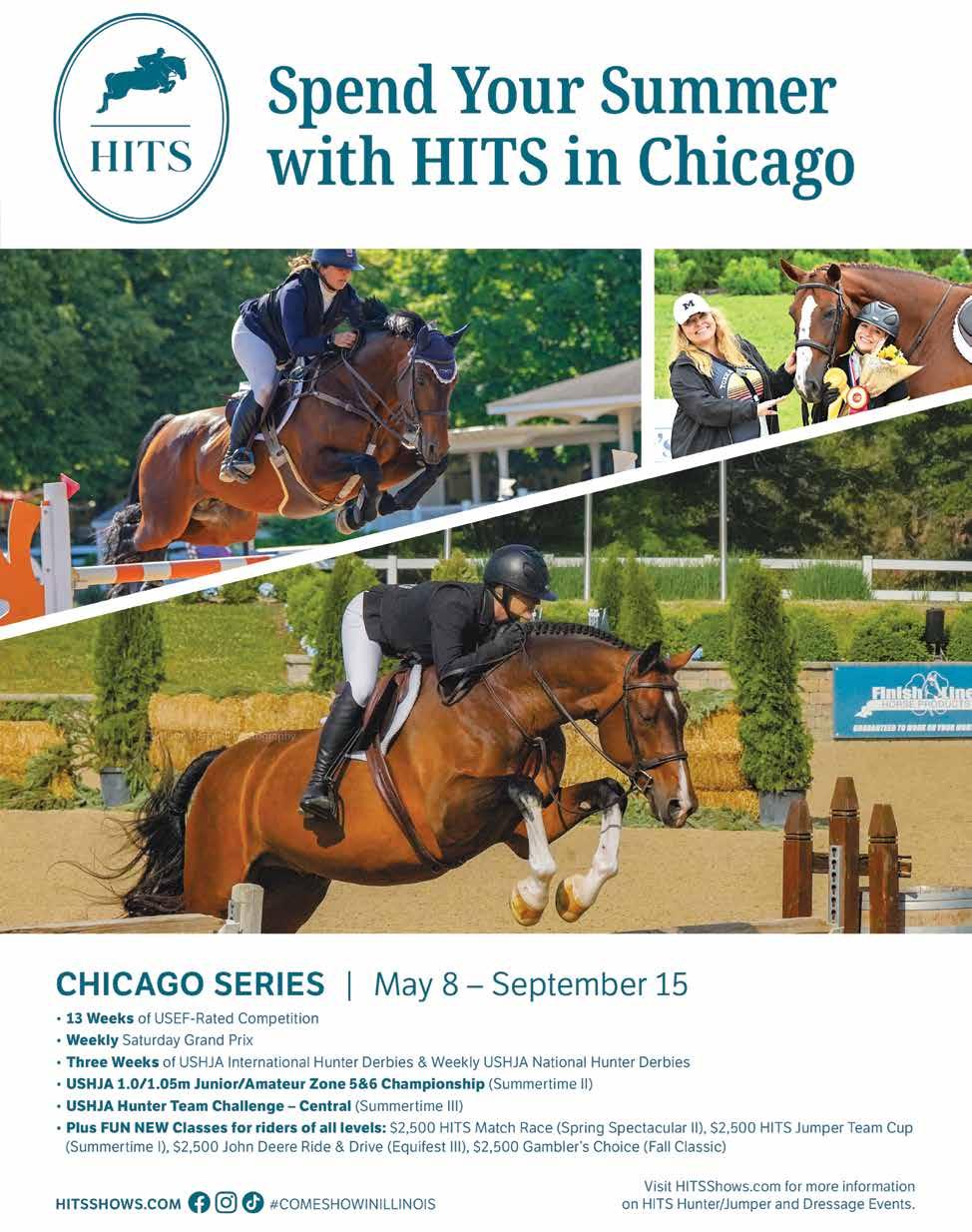
| The Horse Review June 2024 2
Page 5:
Summer Horse Health Care
Managing Heat Stress: Strategies for Prevention and Care
By Lauren Abbott
Page 6:
Summer Horse Health Care
Safeguarding Horses Against Tick- Borne Illneses BY Lauren Abbott
Page 8:
Summer Horse Health Care
Equine Respiratory Resilience in the Summer BY Lauren Abbott
Page 10:
Summer Horse Health Care
Summer Hoof Care: Navigating Seasonal Challenges
By Lauren Abbott
Page 12:
Healthy Horse & Rider
Let’s Get Cracking: How Equine Chiropractic and Acupuncture Helps Your Horse
By Kyla Szemplinski, MS | UT TSU Extension Shelby County
Pg. 14
Behind the Business
On the Road with Kiersten Sudlow and Performeq
By Lauren Abbott
Page 17:
Competition Zone
Celebrating Horses and Community for 75 Years
By Lauren Abbott
Page 19:
Competition Zone
ExEL Summer Spectacular and College Combine
By Lauren Abbott
Page 20:
Competition Zone HITS Chicago Gears up for Summer
By Lauren Abbott
Page 22:
Greener Pastures
Horses and the Environment: How Horse Farms Positively Impact Our World
By Lauren Abbott
Page 24: Calendar of Events Page 25: Marketplace: Equestrian
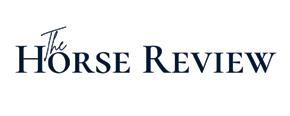
June 2024 Volume 34 | Number 10
The Horse Review is owned by Ford Abbott Media, LLC
Publisher & President:
Lauren Abbott labbott@thehorsereview.com
Advertising & Marketing
Anna Harrington Anna@thehorsereview.com
Editorial:
Ashlee Pigford: Managing Editor
Gary Cox: Contributing Photographer
Grace Netter: Contributing Writer
Paul Nolte: Contributing Photographer
Rachel Ledet: Contributing Writer
Design & Production
Melissa Williams Amber Murphy
Mailing:
P.O. Box 451 Nesbit, MS 38651
Subscriptions
Subscriptions are $60 annually for print and digital access. email: info@mshorsereview.com
To submit articles, artwork and press releases please email: labbott@thehorsereview.com
We cannot guarantee publication or return of manuscripts or artwork. reproduction of editorial content photographs or advertising is strictly prohibited without written permission of the publisher.
Published by Ford Abbott Media, LLC
www.thehorsereview.c0m ©The Horse Review All Rights Reserved
The Horse Review | 3 June 2024
CONTENTS
Businesses, Products
& Services


| The Horse Review June 2024 4
The Horse Health Section is Sponsored By:
By Lauren Abbott
Managing Heat Stress in Horses: Strategies for Prevention and Care
In the warmth of a summer day our horses graze and romp in pastures. However, during summer there lies a significant risk that equestrians must be aware of—heat stress. This condition, often underestimated, poses a serious threat to the wellbeing of horses who rely on us for their protection and care. A thorough understanding of its symptoms and the implementation of preventive measures are crucial for maintaining the health and well-being of our equine companions.
Identifying the Signs: Symptoms of Heat Stress
The discomfort of standing in relentless sun and humid heat can cause horses to suffer from heat stress and heat stroke. According to Dr. Cindy Weis, DVM, at Tennessee Equine Hospital West, “The normal range for equine body temperature is 99.5 F to 101.5 F. Horses experiencing heat stress may have elevated body temperature of 102 F to 106 F. A horse experiencing heat stroke often has a body temperature of 106 F and higher.
Heat stress occurs when a horse becomes overheated and fails to cool or recover in a timely manner. Heat stroke occurs when heat stress goes untreated and body temperature fails to decrease leading to excessive dehydration, seizures, and even death.” Here are main symptopms of heat stress:
• Excessive sweating or, conversely, an absence of sweat, indicating a failure in natural cooling mechanisms.
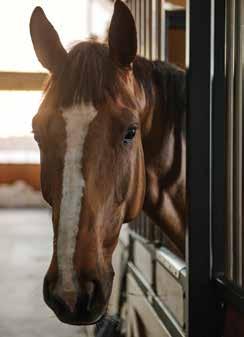

• Dehydration, evident through dry gums, elasticity of skin, and a coat that has lost its sheen.
• Increased heart and respiratory rates, which are the body’s attempts to mitigate the effects of heat.
• A rise in body temperature of 102 F to 106 F, and higher indicating heat stroke.
• Physical manifestations such as stumbling or lethargy, reflecting the severe impact of heat.
According to Kyla Szemplinski, MS, Extension Agent with the UT and TSU Shelby County Extension office, “just like in humans, heat stroke is much more serious since the body temperature reaches 106-110 F and can be fatal if left untreated.” If your horse does not respond to manual cooling aids then it is important to call your veterinarian immediately.
The quickest and most efficient ways to

decrease body temperature:
1. Contact your veterinarian immediately.
Your horse may need intravenous fluids and medical intervention to reduce body temperature, especially if your horse’s condition deteriorates immediately.
2. Stop ALL exercise and remove tack.
If your horse displays signs of stress during a ride it is important to stop the session, remove the tack and access respiratory and heart rate as well as body temperature. The main goal is to ensure your horse returns to normal levels and is responding to your cooling aids.
3. Remove your horse from direct sunlight and get into shade. Getting your horse to a shaded area will immediately decrease the direct heat and stress

the horse is experiencing.
4. Place the horse where there is a breeze or in front of a fan. A cross breeze or air flow from a fan will help cool the horse’s skin, especially if the horse is sweating.
5. Hose with cool water.
Start at the hooves, work up the legs, over the large muscle groups of the hindquarters and then the back, neck and head if the horse calmly allows. Do this for as long as takes to decrease the body temperature.
6. Offer water
Keep cool and fresh water for the horse to drink at will. It is important to ensure your horse does not become dehydrated.
If your horse is not sweating follow the above actions. “Electrolyte supplementation is important as electrolytes can be depleted or lost quickly in sweat over the summer months,” Dr. Cindy Weis, DVM, states.
Our journey with horses emphasizes the significant responsibility we hold. Addressing heat stress in horses is not merely a matter of applying preventive strategies; it is about creating a comprehensive care system that protects the whole horse.
Dr. Cindy Weis advises to “remember that, just like humans, the very young (foals), the old (senior horses) and horses experiencing other health issues such as being overweight, underweight, asthma, etc. may require special attention during the summer months to help keep them cool, hydrated, and comfortable.
Always consult your veterinarian for any specific needs for your horse.”

The Horse Review | 5 June 2024 Focus: Summer
Horse Health Care
Heat Stress:
Well
ventilated barns and shelters are critical during hot and humind days. Misting fans can significantly reduce temperatures during extreme heat. Access to clean water and shade are a must haves for horses in pastures Salt and Electrolytes maintain internal balance of electrolytes in horses.
Aids that can help prevent
Summer Horse Health Care
Equine Respiratory Resilience in the Summer
 By Lauren Abbott
By Lauren Abbott
Heat stress is a primary concern during the summer, yet a less obvious challenge some horses might face is maintaining respiratory health. Similar to humans, horses experience respiratory discomfort in the heat and humidity. A thorough understanding of equine respiratory health and its effective management during warmer months is essential. This knowledge can help keep horses’ respiratory systems in ideal condi-

tion even if they are prone to equine asthma.
Imagine an athlete after a marathon, their chest rising and falling with heavy, effort-laden breaths. Now, picture this scenario in the equine world during the heat of summer. Horses are not mere spectators of their surroundings; they actively inhale the warm air, often filled with particulates, which poses a potential risk to their sensitive respiratory systems.
Studies state that horses suffering from respiratory ailments might exhibit subtle signs, like reduced performance, chronic coughing, or even nasal discharge. Identifying these indicators early is of great importance. Conditions such as inflammatory airway disease (IAD) or recurrent airway obstruction (RAO), casually known as “heaves,” can flare up under summer conditions, jeopardizing the well-being of the horse.
According to Dr. Christine Cocquyt Montgomery, DVM, DACVIM with Tennessee Equine Hospital Main, “Heaves is a commonly recognized respiratory issue in horses. Now termed “Equine Asthma,” this inflammatory condition involves airway reactivity to allergens like dust, mold, and pollen. The underlying physiological changes are similar to human asthma with constric-
tion of the small airways in the lungs and increased production of mucus in the airways. The classic form of Equine Asthma occurs in horses in stalled environments where exposure to dust and fungal spores from hay tend to be higher. Moving those horses outside is often helpful. Here in the South however, we commonly see a different version of this syndrome called Summer Pasture-Associated Equine Asthma (SPAEA) in which horses react to the heavy pollen, heat, and humidity.”
The summer cocktail for respiratory discontent is a fusion of airborne irritants (dust, sand, pollen), hazardous gasses (pathogens, mites), and physical stressors (high temperatures, humidity, strenuous exercise). This medley not only reduces the airflow and oxygen exchange but also incurs long-standing challenges that transcend the summer months.
By knowing potential risks and causes, it’s important to focus on preventative and soothing strategies. In a multi-pronged approach horses can sustain and thrive. It is best to practice a diverse mixture of environmental management, nutritional adjustments, and better Equine Management Practices (EMP) overall.
Dr. Montgomery states, “The first signs

| The Horse Review June 2024 6 Need the flies to buzz off? Put the Cashel fly mask on. Designed for ultimate comfort and protection from both flies and the harsh sun, the Cashel fly collection sets the standard. cashelcompany.com Learn More
Aservo EquiHaler | Courtesy of Boehringer Ingelheim
Section Sponsored By:

of SPAEA may be an occasional cough or increased respiratory effort especially when out grazing or being ridden during the summer months. In early cases, the signs often resolve with the onset of fall and cooler weather. Less severe cases are often managed by moving the horse into a barn with fans or climate control. The respiratory tract in these horses may be ‘hyper reactive,’ so decreasing dust in the environment and feeding clean soaked hay and feed may also be necessary. More severe cases may exhibit flared nostrils, extended neck, and an abdominal push with breathing. The abdominal push eventually causes enlargement of the muscles along the edge of the ribcage commonly known as the ‘heave line.’ Equine Asthma is a progressive condition that may eventually lead to the horse having year-round signs of labored breathing and cough that is difficult to control. Horses with Summer Pasture-Associated may not tolerate riding during the Summer months.”
It is important to note that horses with uncomplicated Equine Asthma should not have a fever, swollen lymph glands, or a lot of nasal discharge. If these symptoms are present then it is best to quarantine the horse and call your veterinarian.
Kyla Szemplinski, MS, Extension Agent
with UT and TSU Shelby County Extension office also recommends, “Horses sensitive to bedding should be moved to a pasture, but if the horse is suffering from allergens from the pasture, they should be moved in a stall with low-dust bedding such as shredded paper or cardboard.”
In the barn, it’s crucial to ensure proper ventilation. As recommended, moisten feeds to reduce dust, and maintain a constant watch on air quality indexes to achieve significant improvements. Simple measures, such as having cooling fans in the stables, watering the arena to minimize dust and rescheduling rides to cooler periods can make a substantial difference.
“In addition to environmental changes and soaking feed, some cases require medications that help open the airways and decrease inflammation. These can be administered systemically or through a nebulizer. Your veterinarian can help determine the best treatment plan for each individual horse,” Dr. Montgomery states.
Considering the role of diet, ensuring an uptake of good-quality forages, like dustfree hays, and adding vitamin E for its antioxidant properties can help bolster the horse’s immune response and respiratory function. Dr. Montgomery recommends,

“Maintaining a healthy body condition in your horse may help them handle the heat and humidity better. Some studies have shown that omega-3 fatty acid supplementation improves the inflammatory response in respiratory conditions as well.”
While it’s tempting to push through the summer’s heat with a regular exercise regimen, dialing down the intensity, increas-
ing cool-down periods, and incorporating breaks are indispensable. Research has underscored the importance of the role of oxidative stress in respiratory disease in horses. By taking advice from veterinarians and applying them, caretakers and horse owners can help their horses sustain throughout the hot, summer months without complications.

The Horse Review | 7 June 2024
Summer Horse Health Care
Safeguarding Horses Against Tick-Borne Illnesses
 By Lauren Abbott
By Lauren Abbott
As the sun hovers low, elongating shadows across the pasture, and crickets fill the air with their melodic hum, horses revel in vast open spaces. Amidst the swaying grass and gentle flicks of their tails lies a hidden danger, transforming this picturesque scene into a nightmare for horse owners. This silent menace is none other than the insidious threat of tick-borne diseases affecting our equine friends.
Borrelia burgdorferi, Equine piroplasmosis, and Anaplasmosis are not common household names, but within the close-knit equestrian community, they are dreaded. The names might not roll off the tongue with the same ease as “West Nile” or “Rabies,” yet the impact they can have on horses and horse owners is no less severe.
Lyme Disease: The infection of the bacterium Borrelia burgdorferi can often masquerade as the rigors of everyday horse life. Dr. Matthew W. Lovell, DVM, Owner and Founder of Tennessee Equine Hospital North states, “B. burgdorferi can cause certain documented clinical signs including a neurologic form of meningitis, inflammation of the eye, nodules on the skin often around a tick bite, and bursitis. Undocumented clinical signs include stiffness, behavioral changes, weight loss, shifting leg or intermittent lameness, and hypersensitivity to touch or stimulation.”
Equine Piroplasmosis: “Infection by the single celled parasites: Theileria equi or Babesia caballi, transmitted by ticks, causes clinical signs in all equine species, and is about 50% fatal,” according to Dr. Lovell. He continues to explain that, “horses with mild signs may show reduced or absence
of appetite, weakness, and exercise intolerance. More severely affected horses can have fever, anemia, jaundice, weight loss, labored breathing, swollen abdomen, colic, and sudden death. Horses that survive become lifelong carriers but may appear normal and can spread the disease.”
Anaplasmosis: Formerly known as “Ehrlichiosis,” Anaplasmosis shares some symptoms with equine piroplasmosis, such as fever and anemia. Dr. Lovell states, “bacterium, anaplasma phagocytophyilum, invades white blood cells and alters their function and causes certain clinical signs. Severity of clinical signs seems to be dependent on the horse’s age. Young horses under a year-old often show fever only. Signs in horses one to three years old can include fever, mild limb swelling, and lack of coordination. Adult horses can show fever, poor appetite, depression, reluctance to move, limb swelling, and jaundice. Abortions are rare but can occur in any stage of gestation. Death is rare and most horses recover over a period of two to three weeks, but death can occur from secondary disease or complications.”
Treatments and recovery
Proper diagnosis can be challenging,

| The Horse Review June 2024 8
particularly in the early stages of these diseases. Lyme disease, specifically, has been called “the great imitator” for its ability to mimic other common equine illnesses. Vet intervention is critical, involving a thorough physical examination and blood tests. For piroplasmosis, serologic tests and examination of blood smears are the most common diagnostic tools. Anaplasmosis is generally diagnosed through a blood test. The quicker you catch these illnesses, the better the chances of successful treatment.
Dr. Lovell states that treatment for lyme disease normally involves the use of longterm antibiotics. “Different classes of antibiotics have demonstrated effectiveness in treating Lyme disease, but studies show intravenous oxytetracycline followed by oral doxycycline or minocycline may prove most effective in preventing recurrence. I once treated an infected mare with 21 days of IV oxytetracycline followed by a 30-day course of minocycline followed by vaccination and felt the treatment was successful. Treatment protocols should be left up to your veterinarian based on their experience.”
In the case of Equine Piroplasmosis where horses that survive become lifelong carriers, Dr. Lovell states, “equine piroplasmosis can be treated and infected horses no longer require export from the US, euthanasia,
or lifelong quarantine. Treatment can only be performed by an accredited veterinarian using an antiprotozoal drug with oversight from a federal or state veterinarian. This program has cleared most horses with the infection, though repeating the treatment has been necessary in some horses. Treated horses can be released from quarantine once thoroughly tested negative for EP.”
And according to Dr. Lovell, treatment for Anaplasmosis “generally consists of intravenous oxytetracycline for several days or intravenous oxytetracycline followed by oral doxycycline. Concurrent NSAID’s may be administered.” This treatment can shorten the course of the disease and prevent secondary complications and longterm illness.
Partners in Prevention
Prevention is always better than treatment, and with tick-borne diseases, this proverb rings truer than ever. There are several strategies to fortify your horse’s defenses against these ailments.
First, understand the ecology of ticks in your area. Knowing when and where your horse is most at risk can help you take proactive measures to mitigate the danger. Familiarize yourself with the types of ticks that are most commonly carriers of these diseas-
Section Sponsored By:
es and recognize their distinct appearance. Modifying the horse’s environment can significantly reduce tick exposure. This can include regular mowing of pasture grass, minimizing their time in wooded or brushy areas, and certainly avoiding known tick hotspots.
From topical applications to treated leg wraps, there’s a range of tick repellents on the market specifically designed for equines. Consult with your veterinarian to find the right product for your horse. Dr. Lovell advises, “use of permethrin containing repellant sprays or pour-on products reduce exposure to ticks.”
Regarding prevention of Lyme Disease he advises that, “Vaccination with off label use of a canine Recombitek Lyme vaccine has proven to offer protection for horses that have not been infected, and I have used the product post treatment, and in multiple horses on a farm where Lyme disease had been diagnosed.”
For EP he advises, “Always use a sterile, unused needle to draw up all medications and for all injections. Make sure all dental and surgical or tattoo equipment is cleaned and disinfected between uses. Administer only licensed blood or plasma products. Monitor the presence of ticks on horses and consult a veterinarian for their control and preven-

tion. Contact a veterinarian if your horse shows signs of fever, jaundice, decreased appetite or weight loss.”
And concerning Anaplasomis Dr. Lovell states, “Since there is no vaccine for anaplasmosis, remove and destroy ticks as soon as possible. Check horses for early signs of illness or infection. Again, destroying tick habitat near your horse’s environment by keeping pastures clipped, clearing brush, and removing wood piles reduces exposure.”
Your veterinarian is your most important ally in the fight against tick-borne illnesses. They can provide guidance on vaccinations, run tests for disease if symptoms are present, and advise on the best course of action should your horse fall ill.
Owners must take on the day-to-day responsibilities of prevention. This includes staying informed about the risks, recognizing the symptoms of tick-borne illnesses, and diligently following through with the prevention tactics recommended by professionals. Regular grooming and responsible pasture management can be game-changers in reducing tick exposure.

The Horse Review | 9 June 2024
Summer Horse Health Care Summer Hoof Care: Navigating Seasonal Challenges
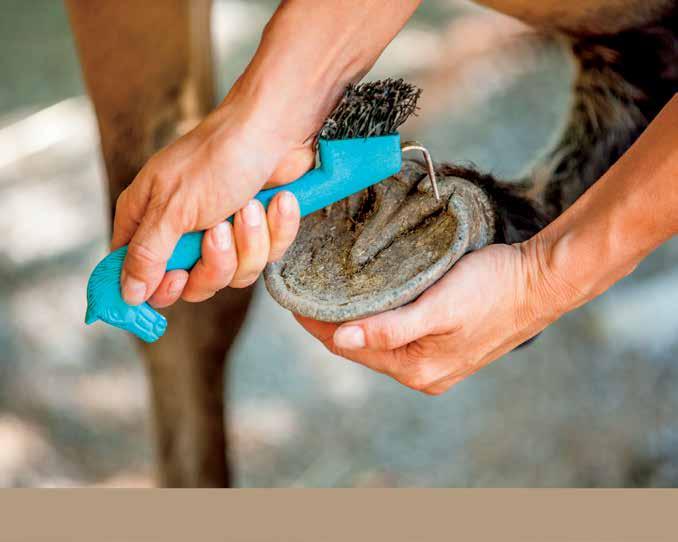 By Lauren Abbott
By Lauren Abbott
Summer, with its sultry days and dramatic thunderstorms, is a season of contrasts, and within these extremes lies a unique challenge for horse owners and equestrian professionals: the health of our equine companions’ hooves. Neglecting the summer’s specific effects on hooves can lead to painful, long-term complications for our horses. Our equine partners encounter a host of seasonal challenges that affect their hooves, but few seasons are as impactful as summer. From hot and dry to wet and muddy, the environmental shifts are vast, and managing these changes is crucial. According to Dr. David Dunlap, DVM, at Tennessee Equine Hospital South, “The hot and dry days of summer typically bring a rise in dry and brittle hooves. In addition to the hot and dry days the perpetual interchange between wet and dry conditions propel the hoof wall to become weakened. A weakened hoof wall is susceptible to cracks, chips and difficulty holding shoes. The defects created in the hoof wall can become a gateway for bacterial and fungal invasion into the hoof wall leading to a more serious condition. In the
face of weakened and brittle hooves, the dry hard ground can create bruising in the soft tissues between the sole and the bones of the hoof increasing the risk of lameness.”
Tips to Maintain Healthy Hooves:
Dr. Dunlap spells out top recommendations to help keep hooves’ healthy throughout the summer. He states, “Proper hoof health is hard to achieve any time of year, but during the summer months, a solid, healthy hoof can be difficult to maintain.” His recommendations include:
• Feeding a balanced diet with a targeted hoof supplement that supplies a range of nutrients, including vitamins, minerals, fats and Omega 3 fatty acids. The key vitamin and mineral nutrients include zinc, copper, biotin, and a good supply of essential amino acids such as Lysine and Methionine. Fats and Omega 3 fatty acids provide key phospholipids.
• Focus on weight management.
• Maintain or shorten the farrier schedule. A properly trimmed and balanced foot will be less mechanically predisposed to cracking due to landing the correct way.

| The Horse Review June 2024 10
• Avoid early morning dew which is higher during the humid months.
• Minimize standing in muddy conditions.
• Reduce the number of baths and hosing.
• When bathing use shields to direct water away from hooves like tight fitting bell boots and/or shellac type hoof dressing. This can also be done with night and early morning turnout.
• Use fly sprays and fly boots to reduce stomping.
• Clean your horse’s hooves daily to prevent stone bruises and thrush.
• If the hooves have bacterial or fungal problems.
• Avoid using hoof dressings that contain caustic ingredients. These ingredients provide a type of hardening that greatly reduces hoof wall elasticity and shock absorption, which makes the hooves more prone to crumbling.
“Routine hoof care, diligence and working with a farrier and veterinarian team can significantly mitigate the risks of severe hoof ailments,” Dr. Dunlap states.
Ensuring that your horse’s hooves are well-attended to in summer is a multi-faceted endeavor. By sticking to leading recommendations such as regular farrier visits, limiting moisture changes, opting for sup-
plements designed to assist healthy hoof growth and a balanced nutrition, horses’ hooves can thrive. There are however some additional products a horse owner can avoid. Those include:
• Petroleum-Based Products: While initially providing a sheen, these can end up blocking the hoof’s natural moisture transfer mechanisms.
• Essential Oils that Dry: Some essential oils, like tea tree oil, can be drying and are not ideal for hooves.
According to Life Data Labs website (www.lifedatalabs.com) and founder, J. Frank Gravlee, DVM, MS, CNS, “Do not use products that prevent oxygen from passing through the hoof wall. When oxygen is ‘sealed out’ from a non-sterile area it creates a perfect environment for hoof destroying anaerobic microorganisms. Avoid caustic materials such as formalin (formaldehyde), iodine crystals, copper sulfate and solvents such as acetone and turpentine. Greasy products which block oxygen should also be avoided.”
The summer months can pull hooves in two dramatically opposed moisture directions, leaving horse owners with the delicate balancing act of keeping them in a stable, healthy state. It’s a season to exercise vigilance and diligence to ensure that our equine companions can stride through the season with ease.
Section Sponsored By:

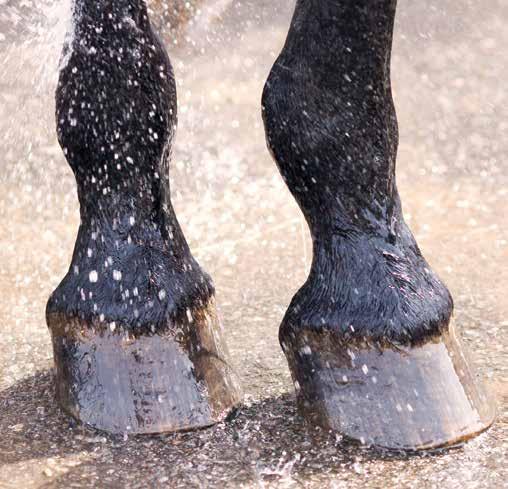

The Horse Review | 11 June 2024
Healthy Horse & Rider
Let’s Get Cracking: How Equine Chiropractic and Acupuncture Helps Your Horse
By Kyla Szemplinski, MS, UT TSU Shelby County Extension
With performance season in full throttle, equine trainers and owners want to find the best methods to keep their equine athlete in top shape. Two methods that trainers and owners seek out might include chiropractic and acupuncture therapy. Chiropractic and acupuncture therapy are performed by licensed veterinarians and have plenty of benefits for horses. Dr. Rilla Evelyn Reese Hanks, DVM, is a licensed veterinarian in West Tennessee and performs chiropractic and acupuncture for her clients.

Specific disciplines may notice performance issues:
• difficulties with lead changes
• problems with lateral bending
• refusing jumps
“Most clinical signs are associated with pain, but changes in gait and abnormal posture may also indicate a problem.”
Just like when humans go to the chiropractor, Dr. Reese Hanks says that “a chiropractic exam includes a thorough physical exam and observation of the horse in motion. A technique called motion palpation is then used to diagnose a VSC. When a joint in the spine is discovered to have little or no motion an adjustment is then performed. An adjustment is a low amplitude, high velocity thrust which restores motion to the spine. Chiropractic care is a safe, non-invasive tool that when used in conjunction with traditional veterinary medicine will keep horses healthy and performing at their optimal level.”
Dr. Reese Hanks says that, “horse owners and trainers need to be aware of the symptoms associated with a VSC.” Signs of neck or back pain include:
“Chiropractic is a manual therapy that focuses on diagnosing and treating biomechanical dysfunctions in the spine. When a joint in the spine loses its normal range of motion chiropractors refer to this as a vertebral subluxation complex (VSC). This loss of motion can result in decreased overall flexibility and muscle soreness. Some common causes of VSCs include strenuous or inconsistent training, performance events, trauma, poor fitting saddle, prolonged stall rest, birthing difficulties, and general anesthesia.”
• reduced performance
• pinning of ears when being saddled or ridden
• tossing of the head
• hollowing of the back
• sensitivity to touch
Acupuncture
Dr. Reese Hanks also offers acupuncture to clients. She states, “acupuncture has been practiced as a treatment modality in humans for over 2,000 years, but only in the last

| The Horse Review June 2024 12
Photo: A horse’s central nervous system:
The nerve signaling begins locally and moves regionally to the spinal cord. It is then extended all the way to the central nervous system, providing systemic pain relief by causing suppression of pain signaling in the brain stem.


century has its use been extended to the veterinary community. As our understanding of acupuncture has grown, so have its applications in clinical practice. Myself, along with several vets in the area offer veterinary medical acupuncture as a drug-free adjunctive therapy for our patients.”
Medical acupuncture acts at many different levels on the patient: locally, regionally and systemically.
Locally
At the local level, acupuncture needling and/or electrical stimulation (“e-stim”) cause increased blood flow to the affected area as well as the release of local inflammatory mediators, all of which promote local tissue healing.
Regionally
The stimulus of the acupuncture needle also travels up the nerve to a regional spinal cord segment, causing a decrease in pain signaling at the level of the dorsal horn. Thus parts of the body not directly treated with needles can benefit from acupuncture; if an area of the body is painful but not easily treated directly with acupuncture (the GI
tract or very deep muscle bellies, for example) needling in a more superficial area that shares the same spinal segmental innervation can provide regional analgesia (pain relief).
Systemically
The nerve signaling that begins locally and moves regionally to the spinal cord is then extended all the way to the central nervous system, providing systemic pain relief by causing suppression of pain signaling in the brain stem. At the same time, other structures in the brain stem and midbrain are stimulated to release neurotransmitters and hormones responsible for a sense of calm and well-being. Thus systemically, acupuncture serves to promote pain relief and relaxation throughout the body.
While acupuncture provides profound pain relief and can improve many musculoskeletal and peripheral neurologic conditions, it is not a substitute for a medical diagnosis and should never replace appropriate veterinary care. The greatest results are seen when acupuncture is performed by a trained, certified veterinarian in conjunction with appropriate traditional therapy.
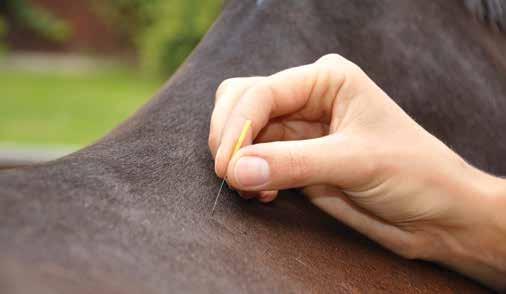
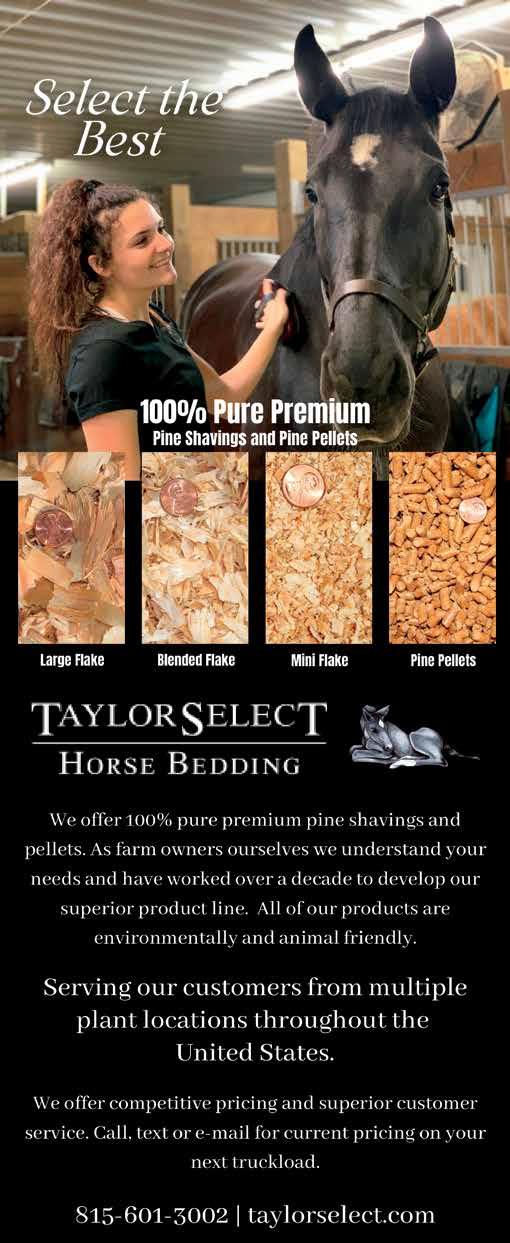
The Horse Review | 13 June 2024
Section Sponsored By:
Behind the Business
 By Lauren Abbott
By Lauren Abbott
Kiersten Sudlow and Performeq: Hitting the Road with a New Mobile Business
Kiersten Sudlow, the owner of Performeq, a mobile tack store, has been riding horses her entire life. Her mother, Fara Sudlow, is well-known among Hunter/Jumper riders in the Greater Memphis area as the proprietor of Saddles N Such in Germantown, Tennessee.
When Kiersten was around 13, Fara purchased Saddles N Such, seamlessly integrating the tack store into Kiersten’s daily life. As a young teenager, Kiersten would finish her homeschool courses and homework at the store’s register every week day.
At 14, Fara bought Athena Du Rouet SCF, affectionately known as Tina, for Kiersten. Tina, a powerful 17.2-hand Show Jumper, was bred by Karin Morgenstern Jiminez of Sporting Chance Farm. Reflecting on the early days of their partnership, Kiersten recalls, “I could barely hold on to her, but because the smile on my face was so wide when I rode her we decided to take a chance.”
As Kiersten competed with Tina in Show Jumping and immersed herself in the daily operations at Saddles N Such, she developed a deep appreciation for having the right gear for a horse. “Anyone who knows Tina knows she can JUMP, but she’s not an easy ride. Finding the right gear, products, and care regimen for a sensitive, complex mare took a lot of trial and error. Through all those efforts, I became passionate about how the right choices for a horse and rider can significantly influence success.”
Kiersten pursued higher education at Rollins College, majoring in International Business with a minor in Archaeology. During her time there, she tried to explore life beyond horses, even studying abroad in Australia for a semester. However, no matter what she did, she always found her way back to horses.
While at Rollins, Kiersten trained with Olympic rider Lucia Santa Cruz. “She [Lucia] helped shape me as a horsewoman. I consider the knowledge I gained under her guidance some of the most valuable of my college years,” Kiersten reflects.
As her four years at Rollins ended, Kiersten returned home to work as a Barn Manager for
Macy Clark Eventing. “I loved spending all day at the barn (having a great boss helped too), but I missed the hustle and bustle of Saddles N Such during the quiet moments,” Kiersten explained. In January 2024, she swiftly initiated plans to debut a mobile tack store at the Gulf Coast Classic in February, leading to the creation of Performeq.
Tell us about your business name and why you selected it?
I firmly believe that in order to perform your best, it is essential to have properly fitting tack, gear, and apparel selected to suit the horse and rider as individuals. Hence, Performeq: High Performance Equestrian Gear Specialists was born. I carry a variety of high quality products that I know, love, and have researched in order to help my customers, horses and humans alike, perform their best.
What has been the best thing about starting your own business?
The best thing about starting my own business has to be the freedom it gives me. Freedom to share my passion with the equestrian community, freedom to build my own schedule, freedom to travel to shows I’ve been dying to see, freedom to financially support horses of my own.
What has been the most difficult thing about your business?
The most difficult thing about my business is the time it has taken away from the barn. I went from spending eight+ hours a day, six days a week, in the barn with my hands on horses, to spending 10+ hours a day, six days a week primarily watching them from afar. Oftentimes I go weeks without riding or getting to see my own horses. The goal that one day I can be doing this, with my horses traveling alongside me, keeps my chin up in the moments that I miss them.
Where do you see your business in five years?
In five years, I hope to have a second mobile unit on the road, or perhaps open a storefront in an area I discover while on the road that feels like home.
| The Horse Review June 2024 14
Kiersten riding “Tina.” Photo by Giana Terranova
Who are your role models?
Without a doubt, my mom is my biggest role model. An entrepreneur herself, she has built Saddles N Such on a foundation of trust and reliability to the Memphis Hunter/ Jumper community. Clients, amateurs and trainers alike, respect Fara not just as a retailer, but as a horsewoman too. She applies her knowledge from years spent in the barns to her work in the tack store, to ensuring that riders are leaving the store with just what they need– not too little, but not too much, either. She works religiously, even outside of the store, even on her days off, taking texts or calls in the late evening hours, only to start again before the sun has fully risen. She does this all to provide the community she loves with the best service possible.
What do you think is the most important thing about running a business in the equine industry?
I think the most important thing to remember while running a business in the equine industry, is that just because something works for you, doesn’t mean that it will work for everyone. Horses and riders come in a million different shapes and sizes, their minds and experience in even more complex combinations beyond that. I think it’s important to keep in mind that there should always be options– there is no forcing people and their horses into a box. If something isn’t working, there’s always another solution. From the retail perspective, there is a constant revolving door of new trends and styles. But when it comes to gear, especially safety gear, what’s trending isn’t always the perfect fit for everyone, and it’s my job to ensure I’m sending someone out with the right thing for them, not just because it’s what I like the best for myself or what all of their friends are using at the moment.
How do you select shows where Performeq will be at?
I have scrolled through either USEF or HorseShowsOnline’s register of Hunter/Jumper shows from the previous year and looked at areas not more than a day’s drive away that have good horse show numbers. I also take into consideration where my customers have said they are going next, or perhaps they might have a suggestion of somewhere they would like to see another store. Oftentimes, there will be multiple tack stores at shows, but I try to pick shows in which I don’t have too much stock in common with the other stores. We’re all out here trying to best serve our community. Competition is inevitable, but I always think it’s better if everyone can be in a position to succeed.
Do you feel it is harder to gain repeat customers as a mobile business?
I think, perhaps if I were traveling very sporadically, repeat customers might be a struggle. But I would say, the hardest thing is getting people to first come in the door. I’m an unrecognized brand and a new face. But once people come in, I usually see them again throughout the show. A lot of barns utilize a similar tactic for finding shows– they don’t want to ship the horses further than a day’s drive, unless it’s for circuits or finals, of course. Taking the feedback of where customers are planning to go next helps with repeat customers as well, because we are once again set up at the same show together. One of my favorite things is when they bring their horse by to visit me again, as well!
What are the benefits to owning a mobile business?
One of the benefits to owning a mobile business is that I can take a week or two off of work, and not have to have an employee cover to keep the store open. I can simply bring the store home, and I will not be missed for a week or two! That kind of time off in America is a huge luxury. I also get to travel to horse shows and areas that I love, and experience it with new friends. While in Gulfport, for example, I was able to spend a few days off in New Orleans, a place I’d never been before but had been dying to visit. While in Pin Oak, I got to watch six Grand Prixs–more than I’d gotten to watch in the entire year prior!
What are the disadvantages?
The disadvantages, and one of the things I am struggling the most with at the moment, is managing a healthy lifestyle on the road. Horse show food is oftentimes not the most nutritious, and staying in hotels or Airbnbs all the time can make preparing food difficult (and all the eating out isn’t easy on the wallet, either). Without a horse to ride on the grounds, and the business taking up more hours than your typical 9-5, it can be hard to find time to keep myself fit, as well. It’s a good thing I can take time off when I’m at home, because after riding Tina without sitting on a horse for weeks, you know I’m going to be worn out the next day!
Advice you want to give to young equestrians wanting to work in the equine industry?
There are SO many different paths out there other than riding/training in the equine industry. I know we all appreciate our professionals endlessly, but that lifestyle isn’t for everybody, and that’s okay! For a while, I thought I only had two options: ride professionally, or become a lawyer or doctor or something like that to pay for it. I think it’s important to do what you love, but there are a bunch of amazing career paths that can incorporate horses and even horse showing into worklife. I’ve met some amazing bodyworkers, artists, sales reps, and other small business owners during my short time on the road.
Quote you live by?
“Do what you love, and you will never have to work a day in your life” - I think this quote has especially rang true for me in recent months. Ever since I was young, my mom has always pushed me to explore my passions and encouraged me to pick a career that I enjoy. I think I

have always known in my heart that whatever I did, it would have something to do with horses. Growing up, I found myself spinning every essay and almost every conversation into something about horses. Working in the tack store at a young age really spurred this on, and part of why I decided to go this direction in the industry is because I get to spend everyday talking about my passions.
What is a must have in your tack trunk?
A must have in my tack trunk are Incrediwear polo wraps. They work as a compression bandage while you’re riding. Afterwards, simply hose them down to activate an icing effect. This is such a great product I always have in my trunk, especially for horse shows when access to a freezer and ice boots might be limited.
What is a must have in your riding apparel closet?
A must have in my riding apparel closet would have to be my navy Equiline Hayley coat. I absolutely love the timeless, elegant design of this coat, and how it works in any ring. A few changes in accessories, and I can take my look from “Jumper Baddie” to “Hunter Princess”! Putting together the whole look from head to hoof is one of the most fun aspects of my job!
Performeq will be on the road this summer. Here is the planned summer schedule where you can visit Kiersten and her new mobile store, Performeq, while on the road showing:
Germantown Charity Horse Show June 4- 8
ExEL Summer Spectacular & College Combine June 21- 23
HITS Chicago Lamplight Summertime I, II, & III July 3- 21
HITS Chicago Equifest I, II, & III July 24- August 11

The Horse Review | 15 June 2024
Photo by Eye Was Here
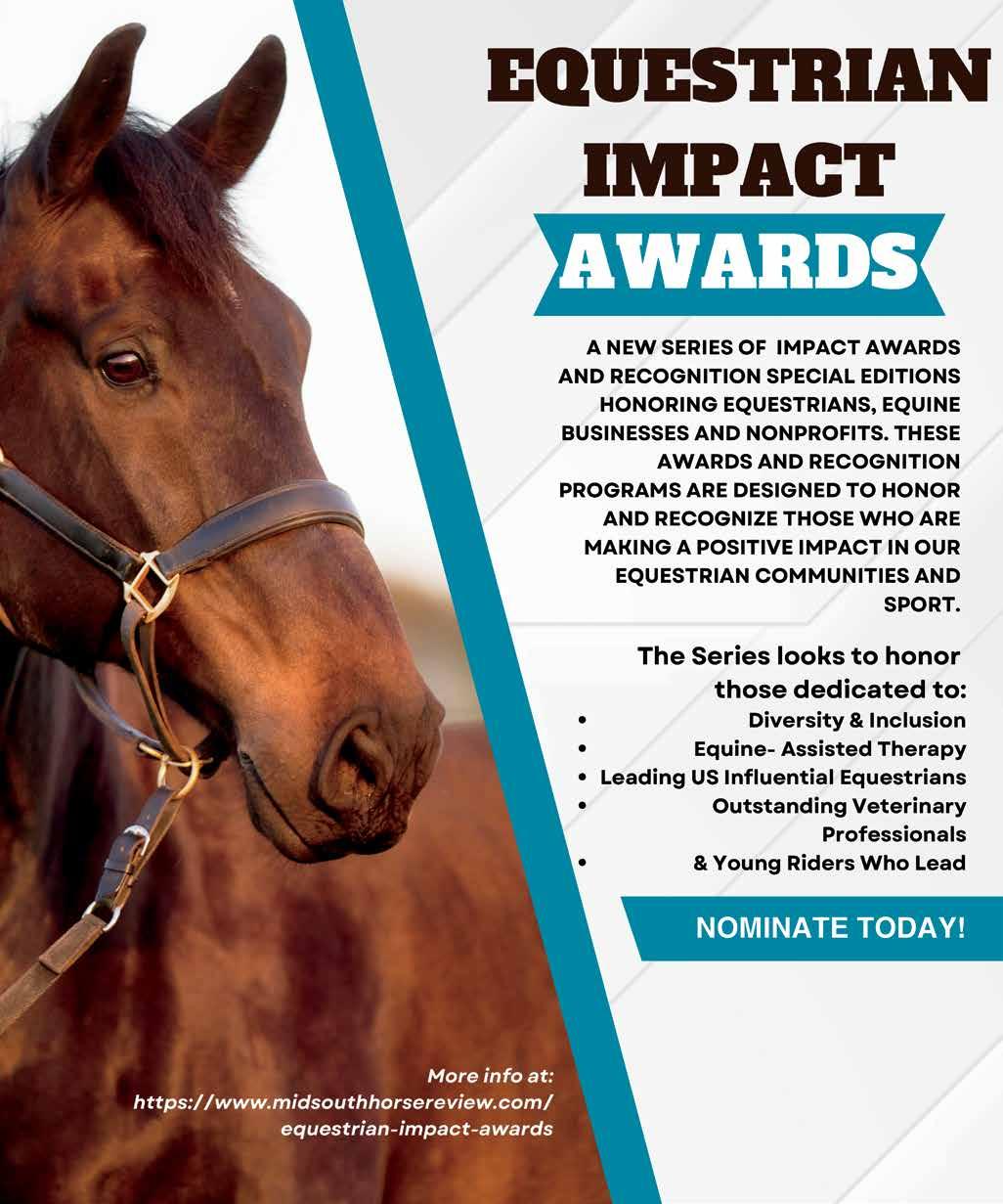
| The Horse Review June 2024 16
Celebrating Horses and Community for 75 Years
 By Lauren Abbott
By Lauren Abbott
Founded in 1946 by a small group of fox hunters in the post-World War II era, the Germantwon Charity Horse Show (GCHS) has grown to become one of the largest all-breed horse shows in the United States. The community’s deep-rooted love for horses and the desire to foster connections among friends, family, and animal lovers have been the driving forces behind the show’s enduring success.
GCHS stands out for its remarkable diversity of breeds and disciplines, providing a unique spectacle for attendees. Over the span of five days, participants and visitors will be
treated to performances and competitions featuring Hunter/Jumpers, Gypsy Vanners, Flat Shod Tennessee Walking Horses and Racking Horses, American Saddlebreds, Paso Fino, and Sidesaddle and Carriage Driving classes.
The variety of breeds and classes not only highlights the versatility and skills of the horses but also celebrates the rich tapestry of equestrian sports in the United States.
Beyond its equestrian excellence, GCHS is a beacon of community spirit and southern hospitality. Activities and events are designed for all ages, ensuring that families can create lasting memories together. From pony rides and face painting to vendor booths and local cuisine, there is something for everyone to enjoy.
GCHS isn’t just about celebrating the hu-
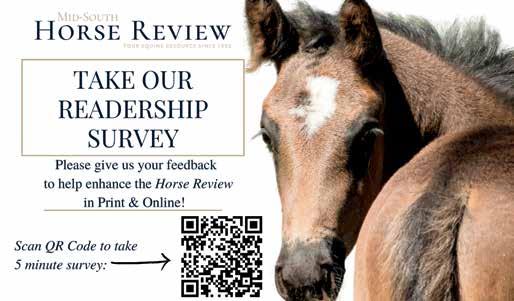
man-horse bond; it’s also dedicated to giving back to the community. Over the years, GCHS has contributed more than $1.5 million in sales tax revenue to the city of Germantown and has raised tens of thousands of dollars for various charitable causes according to www. gchs.org. By promoting equine sports, preserving local history, and supporting charities focused on children, families, and education, GCHS continues to make a positive impact on the community.
As the show commemorates its 75th anniversary, it remains committed to its founding principles. The organizers aim to promote equine sports within the community, preserve the rich history associated with these sports, and support local charities. This blend of tradition and forward-thinking ensures that
GCHS will continue to be a cherished event for generations to come.
Whether you’re a competitive equestrian, a recreational horse owner, or a community member looking for an exciting event, the Germantown Charity Horse Show promises an unforgettable experience. Come and witness the grandeur, elegance, and camaraderie that has defined this historic show for 75 years.
For more information visit www.gchs.org. Tickets are available at the gates, with free parking and shuttle buses to and from the show grounds.
Don’t miss this opportunity to be part of a remarkable tradition that celebrates the beauty of horses and the strength of community bonds.
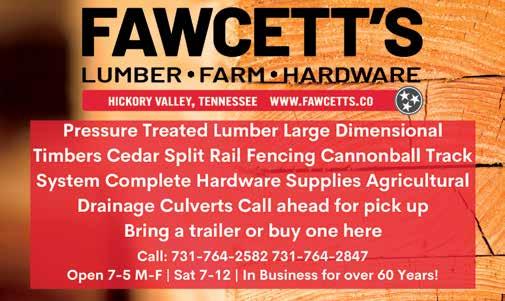
The Horse Review | 17 June 2024
Competition Zone

| The Horse Review June 2024 18
Competition Zone
ExEL College Combine: A Groundbreaking Opportunity for Aspiring Collegiate Equestrians

The Greater Memphis Area is set to host an unprecedented event for young equestrians aiming to ride and compete at the collegiate level. The ExEL Summer Spectacular Horse Show and College Combine, organized by Brittany Kasprack Coleman, owner of ExEL Shows, promises to be a transformative experience for riders in grades nine through 12. This event will take place from June 2023, 2024 at the Germantown Charity Horse Show grounds in Germantown, Tennessee. The event provides a unique platform for aspiring athletes to showcase their skills and engage with recruiting colleges.
A First-of-Its-Kind Event
The ExEL College Combine is the first event of its kind in the region, bridging the gap between high school equestrians and collegiate riding programs. It offers a rare opportunity for young riders to perform in front of collegiate coaches from a variety of institutions, including Division I, II, and III schools, as well as IHSA, IDA, and USEA programs. Confirmed colleges attending include prestigious institutions such as the University of Louisville, Keiser University, South Dakota State, Albion University, Alvernia University, the Ferrum Panthers, SCAD (Savannah College of Art & Design), UT Martin, Rhodes College, Ole Miss, Hollins University, Sweet Briar College, and Emory & Henry College, among others.
Inclusivity for All Skill Levels
One of the standout features of the ExEL College Combine is its inclusivity. Riders of all skill levels are encouraged to attend, from beginners to those competing at advanced Equitation levels. Middle school equestrians are also invited to audit the events, providing them with valuable exposure to the collegiate riding landscape.
Important Notes for Attendees
A crucial point to note is that NCEA Division I coaches can only engage directly with upcoming seniors. Freshmen to juniors will be limited to observation only, in accordance with NCEA regulations.
Key Events on the Agenda
The ExEL College Combine is packed with events designed to offer maximum exposure and learning opportunities for participants. Here is an agenda for the weekend:
Collegiate Showcase
Clinic —
June 20, 2024
The clinic will feature prominent clinicians Matt Cyphert and Louisa Marcelle Eadie, working with riders in a two-phase (flat and fences) small group setting. Riders will be grouped according to experience level, and horses must be provided by the riders or leased. Importantly, horses must be fit for the level of the assigned clinic and
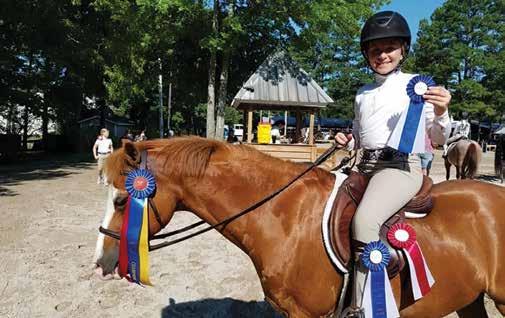
able to tolerate swapping riders. Horses are available for lease by contacting show management. Collegiate coaches will be onsite to evaluate rider performance, and auditing this event is free of charge.
Collegiate Fair
— June 20-23, 2024
Throughout the weekend, collegiate coaches and administrators will be available for one-on-one discussions with riders, trainers, and parents. This exclusive opportunity is reserved for registered recruits.
Combine Conference —
June 20, 2024
The Pathways to Collegiate Riding Conference will feature guest speakers such as Piper Klemm of The Plaid Horse and Randi Heathman of The College Equestrian Advisor, among others. This conference is open to participating equestrians, trainers, and parents.
ACT Prep — June
20, 2024
Athletes will have the chance to participate in an ACT Prep session conducted by academic professionals, aiding them in their overall college preparation.
Horsemanship Quiz Bowl — June
20, 2024
An educational horsemanship knowledge bowl will be held, with prizes up for grabs,
making for an engaging and informative experience.
Collegiate
Show Observation — June 21-23, 2024
Riders participating in the ExEL College Combine will be listed in a directory for collegiate coaches to observe their classes. Riders may compete in any class throughout the ExEL Show, and coaches will be assisted in tracking riders over the weekend. Trainers are available to riders who do not have a trainer present at the show.
The ExEL College Combine represents an unparalleled opportunity for young equestrians to take a significant step toward their collegiate riding ambitions. With a comprehensive agenda designed to maximize exposure and learning, this event is poised to become a cornerstone for aspiring collegiate riders in the Mid-South region and beyond.
For more information visit www.exelshows.com. Don’t miss the chance to be a part of a groundbreaking event that can shape the future of your equestrian career.

The Horse Review | 19 June 2024
Photos courtesy of ExEL Shows
Caelinn Leahy Dominates the Final Week of Lamplight Spring Classic, Claiming Victories in the $24,500 FarmVet Grand Prix, $5,000 Alliant Private Client, and $5,000 Horseflight Jumper Classic Competition Zone
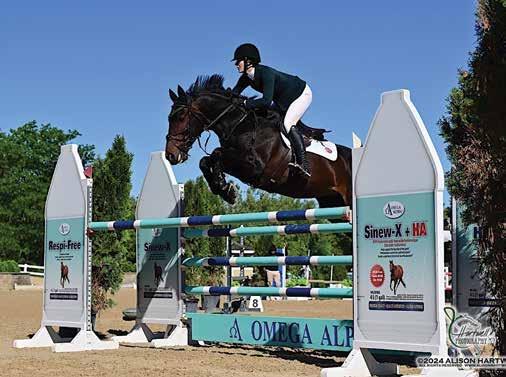

Bellis Farm rider Caelinn Leahy showcased remarkable skill and consistency during the final week of the HITS Chicago Lamplight Spring Classic, achieving several top finishes. The highlight of her week was a wire-to-wire victory in the $24,500 FarmVet Grand Prix on Saturday, May 25, 2024, aboard Zarkava.
In a six-horse jump-off, Lisa Goldman-Smolen of Red Coat Farm set a formidable pace with Narcotique B, an 11-yearold Belgian Warmblood stallion owned by Stephanie St. John, finishing in 43.015 seconds. With Goldman-Smolen still to compete with her second ride, Romeo B, Leahy needed a flawless and fast round. Executing a swift gallop across the arena and a precise turn to the final line, Leahy secured the lead with a fault-free finish in 41.589 seconds. Goldman-Smolen followed with Romeo B, her seven-year-old Belgian Warmblood
stallion, mirroring Leahy’s track but stopping the clock at 42.611 seconds. Ultimately, Leahy claimed victory with Zarkava, a 16-year-old Irish Sport Horse mare owned by Steve Schaefer, while Goldman-Smolen took second and third places with Narcotique B and Romeo B, respectively.
“I always have to bring my A-game when I’m up against Lisa [Goldman-Smolen],” remarked Leahy. “Both of her horses are quicker than mine, so it’s always fun and challenging in the jump-off with her!”
In addition to her Grand Prix triumph, Leahy also secured first and third places in Friday’s $5,000 Alliant Private Client 1.35m Jumper Classic, with Goldman-Smolen once again taking second place. Leahy rode Steve Schaefer’s 16-year-old KWPN gelding, The Gray Man, to victory with a clear jump-off time of 43.19 seconds. Goldman-Smolen, delivering the only other clear first round, completed the three-horse jumpoff aboard Barbra Disko’s six-year-old Belgian Warmblood stallion, Solomon B, with a time of 45.269 seconds. Leahy’s second
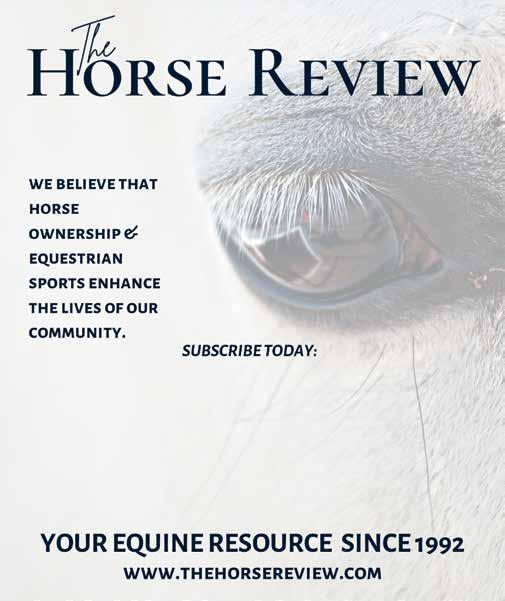
| The Horse Review June 2024 20
Courtesy of HITS Show
Caelinn Leahy and Zarkava. Photo by Alison Hartwell Photography
mount, Zarkava, finished with a quicker time of 41.139 seconds but incurred a fourfault round, placing her third.
Reflecting on her achievements, Leahy expressed her enthusiasm for concluding the Lamplight Spring Classic with another win.
“I love showing here and plan to be back this summer,” she said. “The new management has revitalized the show, and it looks beautiful. It’s great to see more spectators and competitors. It’s a beautiful venue, and the improvements lead to great competition and viewership.”
On Sunday, May 26, Leahy capped off her week with her third showcase victory in the $5,000 Horseflight Jumper Classic. She pi-
loted Hennessy, a 12-year-old Dutch Warmblood mare owned by Andrew Bourns, to a double-clear round and a winning time of 47.486 seconds. Leahy also claimed the second-place prize on The Gray Man, with a clean effort and a close time of 47.518 seconds. Adeline Rohrbach of Red Coat Farm rounded out the top three on her 11-yearold Holsteiner gelding, Cooper 211, with a faultless round in 49.633 seconds.
Though the Lamplight Spring Classic Series has concluded, the excitement at HITS Chicago continued on Wednesday, May 29, with the start of the three-week-long Lamplight Spring Spectacular Series.



The Horse Review | 21 June 2024
Lisa Goldman-Smolen and Romeo B. Photo by Alison Hartwell Photography
Competition Zone
Caelinn Leahy and The Grey Man. Photo by Alison Hartwell Photography
Horses and the Environment: How Horse Farms Positively Impact Our World

 By Lauren Abbott
By Lauren Abbott
In an era increasingly defined by environmental consciousness, every aspect of human activity is scrutinized for its ecological footprint. Amidst this critical examination, the role of horses in shaping our environment often goes overlooked. Horses play a significant and beneficial role in environmental stewardship, particularly through their influence on carbon cycles and the process of photosynthesis in their pastures.
Horses and the Carbon Cycle: A Natural Symbiosis:
The carbon cycle, a fundamental component of the planet’s life support system, involves the exchange of carbon among the earth’s atmosphere, oceans, and terrestrial ecosystems. Horses, as part of these ecosystems, contribute to the carbon cycle in several nuanced ways.
First, through their grazing activities, horses help manage plant life in pastures, which is crucial for maintaining healthy carbon dioxide (CO2) levels. By consuming older foliage, they encourage the growth of new plants that absorb CO2 more efficiently, a process
central to photosynthesis. This natural grazing pattern prevents overgrowth, promotes species diversity, and ensures that pastures act as effective carbon sinks, absorbing more carbon than they release.
“A healthy pasture with at least three to four inches of plant growth will act as a carbon sink, which pulls harmful CO2 out of the atmosphere…A carbon sink is an area that absorbs more carbon than it can release such as plants and soils. Too much carbon dioxide in the atmosphere can lead to greenhouse gas which contributes to climate change or the increase in global temperatures. This is where well-managed horse pastures can help with the carbon cycle,” Kyla Szemplinski, MS, with UT TSU Shelby County Extension explains.
Furthermore, the physical disturbance of soil by horse hooves aids in aerating the soil, increasing its capacity to sequester carbon. This aeration enhances the decomposition of organic materials, enriching the soil with carbon-based compounds that further foster plant growth and CO2 absorption.
The Role of Photosynthesis in Horse Pastures: Photosynthesis, the process by which green

| The Horse Review June 2024 22 Greener Pastures
plants and some other organisms use sunlight to synthesize foods from CO2 and water, is vital for life on Earth. Horse pastures are vibrant ecosystems where photosynthesis occurs on a grand scale, driven by the ample sunlight and water these lands often receive. The presence of horses can enhance this process in several ways.
“Horses themselves do not essentially enhance the photosynthesis process, but it is how the land they live on is managed that can enhance the photosynthesis process. Horse owners should NOT let their pastures become barren wastelands by letting their horses continuously graze the grass and overgraze it. Owners should implement rotational grazing management steps to preserve the grass so the photosynthesis process can be maintained. This means pulling horses off the pasture when it is grazed down to about four inches, mowing the pasture to about three inches and letting the grass regrow to about 8-10 inches before turning horses back on the pasture. Allowing the pasture to ‘rest and regrow’ allows the plants to regenerate carbohydrate root reserves and leaf surfaces,” Szemplinski states.
By grazing and responsible pasture management and rotation, horses help regulate plant height and density, ensuring that sunlight penetrates the canopy to reach plants at ground level, facilitating photosynthesis throughout the pasture. This not only maximizes the pasture’s ability to act as a car-
bon sink but also supports a diverse range of plant species, contributing to biodiversity.
Beyond the Pasture, Broader Environmental Contributions:
The positive impact of horse pastures extends beyond carbon cycles and photosynthesis. Horse ownership contributes to land conservation efforts and the preservation of green spaces. Equestrian trails and horse farms often prevent land from being developed for industrial or residential use, keeping these areas green and contributing to the overall health of the environment.
In managing horse pastures, there lies an opportunity for education and advocacy around sustainable land management practices. By adopting eco-friendly practices, such as rotational grazing, composting manure, and protecting water sources from contamination, horse owners can further minimize the environmental footprint of their equine companions.
The relationship between horses and the environment is a testament to the interconnectedness of all living things. Horses do not merely exist within ecosystems – they enrich them, playing an active role in enhancing the carbon cycle and facilitating photosynthesis in their pastures. Recognizing and supporting the positive environmental contributions of horses is a step towards sustainable green spaces. In appreciating our herd, we help conservation efforts and overall positive impacts on our environment.
Greener Pastures


The Horse Review | 23 June 2024
(901) 757-7777 ext.7106
http://www.agricenter.org/events/
June 5-12: Ranch Horse Congress, Cordova, TN
June 21-23: U.S. Mounted Shooting, Cordova, TN
www.gchs.org (901) 754-0009
June 4-8: Germantown Charity Horse Show, Germantown, TN
June 21-23: ExEL Summer Spectacular, Germantown, TN
Starkville, MS (662)3250508; (662)325-9350
https://mshorsepark.com/events
June 7-8: Northeast District Horse Show
Roane State Community College, Harriman, TN
http://www.roanestateedu/?6497-Events-Calendar
June 7-9: SERHS Show
June 13-16: TQHA Dogwood Classic
July 5-7: East TN Cutting Horse
Murfreesboro, TN www.mtsu.edu/tmc,
June 1: Central Region 4-H Horse Show 8 am-8:30 pm
June 4-5: MTSU Youth Equestrian Clinics
June 8-9: POA Southeast Regional
June 15-16: VOLUNTEER RANCH HORSE ASSOC.
June 21-23: Central Tennessee Dressage Association
July 4: KYQHA The Double Down Circuit
Cleveland, TN 423-476-9310 www.tristateexhibitioncenter.org
June 7-8: NBHA
June 20-22: Cleveland Invitational Horse Show
June 25-29: Cleveland Charity Horse Show
July 5-6: JX2 Roping
July 12-13: National Racking Horse Show
July 26-27: Smoky Mtn. Horse Show
Tunica, MS (662)363-3299 https:// tunicaarena.com/ https://www.facebook.com/TunicaArenaExpo/ June 28-30: Logo Ranch Prod. Barrel Race
July 20: American Bucking Bull
Calendar of Events
Franklin, TN (615) 595-1227
https://www.agexpopark.info/calendar.php
June 20-22: Extreme Mustang Makeover
www.nlbra.com, www.mslbra.org/schedule https://www.mslbra.org/entry
June 1: CALBRA - SEARCY, AR - White County Fairgrounds
https://www.ponyclub.org/ Calendars/Events.aspx
https://midsouth.ponyclub.org/calendar/ https://deepsouth.ponyclub.org/ https://middletennessee.ponyclub.org/calendar/ June 18-23: Mega Rally, Nashville, TN
https://blcc.church/ Sarah, MS. 548 Bryant Lane. Bryant Lane Cowboy Church. Info: facebook Wynne, AR. CR 381. Three Trees Cowboy Church. Info: threetreescowboychurch.com; facebook Collierville, TN. 1656 N. Col-Arl. Rd. Old West Special Trails. Sunday 10:30 am. Cordova, TN: Houston Levee Cowboy Church: Sundays at 4:30 pm at Houston Levee Community Center, 1801 N. Houston Levee Rd. in Cordova, followed by Open Arena at Circle C Arena next door behind Calvary Church. Visit HoustonLeveeCowboyChurch.com or call 901-355-3204 for more information.
FIRST SATURDAY: Houston, MS. Triple E Livestock. Tack 10 am. Horses 2 pm. Info: A.J. Ellis 662-401-9760; 662-266-2808
FOURTH SATURDAY: Holly Springs, MS. Marshall County Fairgrounds. Marshall Co. Livestock Exchange. 662-317-9021 First, Third, Fifth Saturday:Dunlap, TN. American Made Livestock Market. Tack 3pm. Horses 6pm. Info: (423) 447-8119
FIRST SATURDAY: Hattiesburg, MS. T. Smith Livestock Sales. Tack 10:30 am. Horses 1:30 pm. Info: 601-583-0828
SECOND SATURDAY: Gleason, TN. West TN Auction Barn. 330 Fence Rd. Tack 5:30 pm. Horses 8:30 pm. Info: Chucky Greenway 731-571-8198
http://www.nbha.com; https:// ibra.us/shows/US-TN-WEST
June 28: IBRA Youth Preferred ShowCooper Steel Arena, Shelbyville, TN
July 19-21:TN-East IBRA State Finals-Great Smokey Mtn. Expo Ctr. White Pine Tn.
www.midsouthdressageacademy.org, www.TNDressage.com, kentuckydressageassociation.com, June: 21-22: Tennessean Express, Miller Colosseum, Murfreesboro, TN June 23: Tennessean, Miller Colosseum, Murfreesboro, TN
https://americanfield.com/calendar https://americanfield.com/calendar June 29: Purina Bird Dog Awards, Huntsville, AL
http://wthja.com, www.brownlandfarm. com, www.mthja.com, www.ethja.org www.gulfcoastclassiccompany.com
June 4-8: Germantown Charity Horse Show, Germantown, TN
June 5-July 21: HITS Chicago Lamplight Shows
June 21-23: ExEL Summer Spectacular, Germantown, TN
June 26-30: Brownland Farm Summer, Brownland Farm, Franklin, TN
July 3-7: MidSouth Classic, Brownland Farm, Franklin, TN
July 24-31 HITS Chicago Lamplight Equifest
https://southernsaddlebred.com/, https:// www.walkinghorsereport.com/calendar https://nwha.com, www.sshbea. org, www.walkinghorseowners. com, www.shobaonline.com
June 1-2: Extreme Cowboy National Ch.- Champions Arena, Shelbyville, TN
June 1: East TN Walking Horse ClassicS. Central Ruritan Show Gr., Chuckey, TN
June 1: NSSHA Youth & Amateur Show-Cannon County Fairgrounds, Woodbury, TN
June 4-8: GCHS Germantown, TN
June 7: The Youth & Amateur Jamboree Horse Sh.- Champ. Arena, Shelbyville, TN
June 8: Walking for Cancer- Champions Arena, Shelbyville, TN
June 15: ANWARC Gaited Show- Jasper Springs Ranch, Fayetteville, AR
June 15: Open Walking Horse Show- Putnam County Fairgrounds, Cookeville, TN
June 15: ETWAH Ladies Auxiliary Show
-Smoky Mountain Arena, Sevierville, TN
June 15: PWHAT Fun Show, Jernigan Field, Wartrace, TN
June 15: ARAB Summer Classic, Arab City Park, Arab, AL
June 22: NSSHA Show - S. W. Beech Showgrounds, Belfast, TN
June 29: Chestnut Hill Charity, Dandridge, TN
www.franklinpolo.com
July 26: Harlinsdale Farm, Franklin, TN
www.americanranchhorse. net, www.volrha.com
June 7-9: Southeast Ranch Horse Series, Harriman, TN
June 15-16: MS Ranch Horse Association, Brookhaven, MS
www.ipra-rodeo.com, www.prorodeo. com, www.lonestarrodeocompany.com https://calvarychurch.net/cowboychurch
June 7, Jamestown NCA Rodeo, Jamestown, TN
June 7-8: Greenwood Pro Rodeo, Greenwood, AR
June 7-8:Keath Killebrew Memorial Rodeo, Mississippi Coliseum,Jackson, MS
June 7-8: Bold Enough Challenge Rodeo, Triple Creek Park, Gallatin, TN
June 14: Loudon Rodeo, Loudon Municipal, Loudon TN
www.ustrc.com, www.jx2events.com
July 6-7: USTRC/WSTR, Event Flyer Cowboy Church -Cleveland, TN
Facebook: Ingram Mills Saddle Club. Holly Springs, MS. Marshall Co. Fairgrounds. Cook’s Lake Saddle Club. 4269 N. Watkins, Memphis, TN. Info: Wes (901) 570-3595. Cookslakesaddleclub.com Woodstock Cuba Saddle Club. 7211 Woodstock Cuba Rd. Millington, TN. Info: John (901) 412-0327. mywcsc.com
June 7, 14, 21, 28: Independence Saddle Club, 9485 HWY 306, Coldwater, MS 38618 June 15& 29: Sunset Saddle Club, Marshall County Fairgrounds, Holly Springs, MS July 13 & 27: Sunset Saddle Club, Marshall County Fairgrounds, Holly Springs, MS
| The Horse Review June 2024 24
Submit Upcoming Events to info@mshorse review.com
HORSE
PONY CLUB LITTLE BRITCHES RODEO AGRICENTER SHOWPLACE ARENA RANCH
MISSISSIPPI HORSE PARK
ROANE
BARREL
HORSE SHOW
HUNTER
POLO
STATE EXPO CENTER FIELD TRIALS COWBOY CHURCH HORSE SALES/ADOPTIONS
RACING GERMANTOWN CHARITY
GROUNDS TENNESSEE MILLER COLISEUM MTSU TRI-STATE EXHIBITION CENTER TUNICA ARENA & EXPOSITION CENTER DRESSAGE SADDLE CLUB RODEOS & BULL RIDING WILLIAMSON COUNTY AG EXPO PARK
JUMPER RANCH HORSE GAITED HORSE SHOWS
Marketplace Classifieds
BOARDING

HORSE TRAINING
Training your horse, the correct & gentle way. Desensitizing & teaching respect on the ground; trust without fear. We mostly use the Buck Brannaman training methods. Exc. References. Grained 2 x day w/ Bermuda hay & private pastures. $800 Mo. Michael Garner 901-857-8060 Blues City Warmbloods on FB
Boarding at beautiful WHITE OAK FARM: Located on 40 acres in northeast Shelby County at 10023 Rosemark Rd. Full Board $450/month. Board includes stall cleaning/shavings and morning/evening feedings.
Numerous amenities include large stalls with windows, stall fans, heated waterers, turnout pastures, lighted outdoor arena or inside barn riding, crosstie area with hot/cold wash rack, fly spray system, Bermuda hay grown and baled onsite. Gated facility with owners and farm manager living on property. Call Sammy 901-833-3075.
Lakeland 14 stall barn for rent. Wash rack, feed/tack room and hay storage. $1,500/month for the entire barn or $125/month per stall (3 stall minimum). Non public use only.
Nice barn apartment for rent: $700 a month. 901 -338- 9686.
Lakeland 3 acre pasture with 3 stall barn for rent. 2 horses maximum. $250/month. 901 -338- 9686
JOB OPPORTUNITIES
Premier Horse Boarding in Fayette County: Full/pasture board. Retired horses are welcome. Private pastures, grained 2x daily w/senior feed & Bermuda hay. All weather outdoor arena w/ lights. 50+acres of riding, lots of additional amenities. Look us up on FB. Blues City Warmbloods Dana 901-331-3500
Nice friendly barn located in Cordova/ Memphis, TN. Located 15 minutes from Germantown, Bartlett, East Memphis and Shelby Farms. Owners are on site. Retired or Aged horse’s welcome! High dry barn, trails, and small arena. Call Rob (901) 359-3341
Horse-drawn carriage drivers needed in Downtown Memphis. We will train. No experience necessary. (901) 496-2128. uptowncarriages. com
Part- Time Graphic Designer Needed Assist with design and layout of magazines. Other duties can include organizing social media and email newsletters. Required hours: 10 - 20 hours per week, in office located in Eads, TN. Email info@mshorsereview.com
Meadowthorpe Farm in Eads, TN is seeking an experienced intermediate/advanced english or western working student to help out with horses on Saturday & Sundays. This includes cleaning stalls, feeding, hay, turnout, grooming, etc. Must be experienced horse handler. Will consider board on your own horse or supervised rides/ coaching/showing on one of the awesome Meadowthorpe horses if a good fit? Email Manager@MeadowthorpeFarm.com if interested.

The Horse Review | 25 June 2024
Classifieds Get Seen. Email: info@mshorsereview.com to reserve yours!
EVENTS





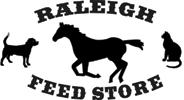







MARK A. AKIN , DVM
Practice limited to Lameness and Performance Issues associated with the Equine Athlete By appointment only : 601-813-1128 cell 901-854-6773 (85-HORSE) MAkindvm86@gmail.com




| The Horse Review June 2024 26 Charles Mercer, DVM • Chara Short, DVM Allison Parnell, DVM • Miranda Easom, DVM Phone: 6 6 2 • 8 9 3 • 2 5 4 6 6 7 4 0 C E N T E R H I L L R D • O L I V E B R A N C H , M S 3 8 6 5 4 Clinic Open: Monday - Friday • 8:00 am - 5:00 pm
AKIN EQUINE VETERINARY SERVICES
©MSHR Akin Equine BC_Layout 1 6/17/2022 10:45 AM Page 1 B Beerr m m u u d daa H Haa y y R R o o u u n n d d & & S S q q u uaarre e B B aal leess winter storage available M M ii cc h h aa ee ll A A n n d d ee rr ss o o n n 9 9 0 0 1 1 -- 2 2 7 7 7 7 -- 4 4 1 1 9 9 8 8 1 1 7 7 2 2 9 9 0 0 H H w w y y.. 7 7 6 6 • • S S o o m m ee rr v v ii ll ll ee ,, T T N N T Taappp p H H a a y y F Faarrm m Leigh Ann Carkeet 901-550-8892 leighanncarkeet@gmail com Speci alizin g in Equestrian Properties ©MSHR New Hope Saddles & Tack 750 New Hope Road Ripley, TN 38063 Cell: 731-697-3356 E m a i l : r l a n g l y @ b e l l s o u t h . n e t E m a i l : r l a n g l y @ b e l l s o u t h . n e t Saddles & Tack <> Saddle Repair Custom Leather Work RALEIGH FEED STORE FEED * SEED * FERTILIZER * BEDDING 4284 Fayette Rd | Memphis, TN 38128
Lewis, owner Heather Lewis, mgr find us: We carry © MSHR dog food Marketplace Business Cards
901-386-0923 Scott

The Horse Review | 27 June 2024

| The Horse Review June 2024 28











 By Lauren Abbott
By Lauren Abbott




 By Lauren Abbott
By Lauren Abbott



 By Lauren Abbott
By Lauren Abbott








 By Lauren Abbott
By Lauren Abbott



 By Lauren Abbott
By Lauren Abbott













 By Lauren Abbott
By Lauren Abbott





















